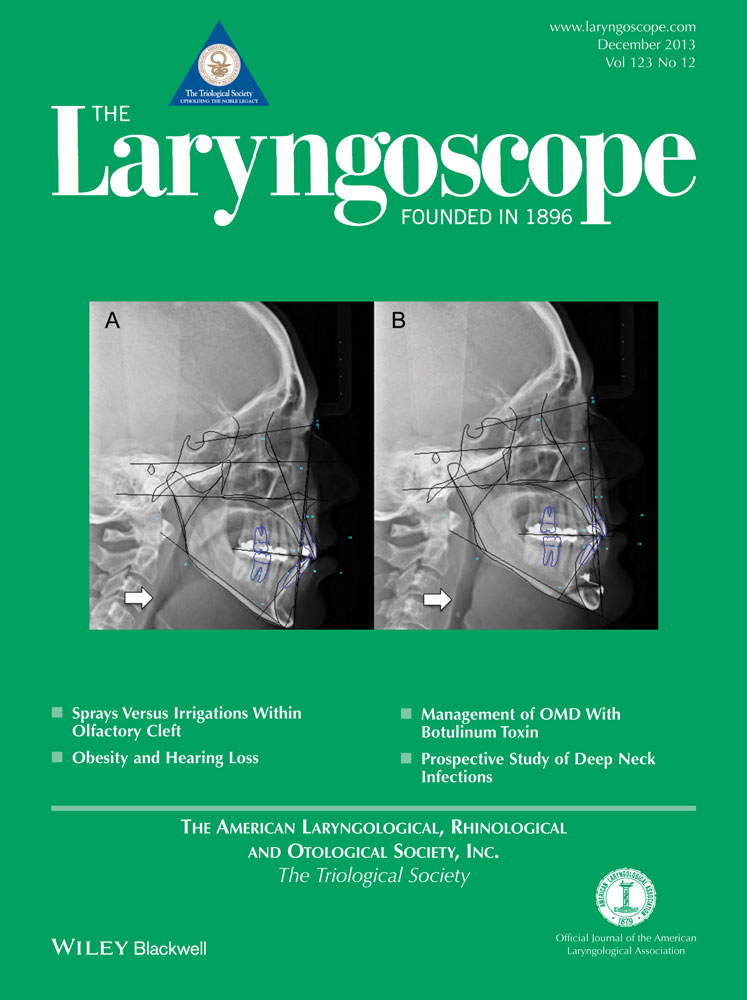18-FDG-PET in the initial staging of sinonasal malignancy
The authors have no funding, financial relationships, or conflicts of interest to disclose.
Abstract
Objectives/Hypothesis
The utility of fluorine-18 fluorodeoxyglucose-positron emission tomography (PET) has been gradually defined for most head and neck cancers, However, its utility in the initial diagnosis of sinonasal malignancy has not been extensively studied. The aim of this study was to determine if PET scanning accurately diagnoses and stages malignant sinonasal lesions and if maximum standard uptake value (SUVmax) correlates with clinically advanced disease.
Study Design
Retrospective chart review.
Methods
There were 51 patients with sinonasal malignancy who underwent diagnostic whole body PET or PET-computed tomography scans that were analyzed for patient and disease characteristics, SUVmax, and staging.
Results
Of the 51 patients, 48 scans were positive at the primary site, with a sensitivity of 94%. Four patients were found to have intensely avid uptake, in which the numerical SUVmax was not documented, and three patients did not have any uptake in the region of their tumor. Mean SUVmax at the primary site was 16.1 (range, 3.1–59). Metastasis was detected in 31% (16/51) of the patients. There was a potential positive correlation between SUVmax at the primary site and detection of metastasis on univariate analysis (r = 0.19, P = .09), but on multivariate analysis, SUVmax was not found to correlate with T staging or metastasis.
Conclusions
For diagnosis of sinonasal malignancy, PET scans have a high sensitivity, although false negatives occurred in 6% of cases. PET scanning detected metastasis in 31% of patients, but SUVmax did not function as a marker for clinically advanced disease. The role of diagnostic PET for sinonasal malignancy is currently limited to cases with a high suspicion of metastatic disease.
Level of Evidence
NA Laryngoscope, 123:2962–2966, 2013




